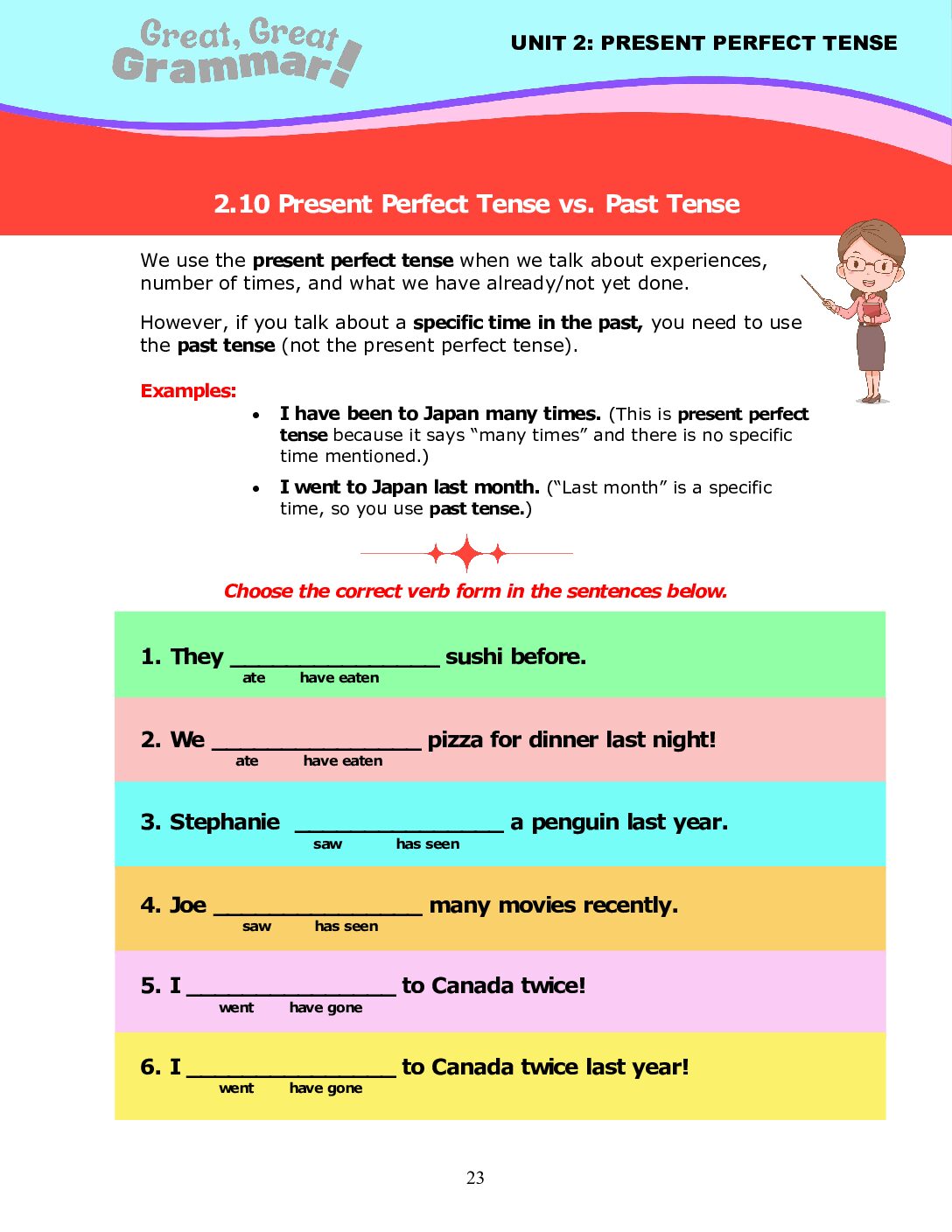This ESL grammar lesson explains the different contexts for present perfect tense and past tense. Students then practice choosing the correct verb form (present perfect tense or past tense) to complete various sentences.
ESL Grammar: Key Differences Between Past Tense and Present Perfect Tense
- Time Frame: The past tense refers to actions completed at a specific time in the past, while the present perfect tense relates to actions that have relevance to the present or have occurred at an unspecified time.
- Focus: The past tense focuses on when an action occurred, whereas the present perfect tense emphasizes the impact or ongoing relevance of the action.
- Usage: Use the past tense for specific past events and the present perfect tense to describe experiences, changes, or situations that continue to affect the present.
The English grammar lesson below reviews the differences between past tense and present perfect tense. Students choose the correct verb tense in sentences according to the context. Our series of ESL grammar lessons on subjects and verbs introduce these concepts and reinforce them through helpful and instructive exercises.
This lesson is available for free download, and you can download many more English grammar lessons focusing on advanced aspects of English grammar (past continuous tense, present perfect tense, present perfect continuous tense, passive voice, embedded questions, relative clauses) in our comprehensive, intermediate- to advanced-level ESL grammar textbook Great, Great Grammar! (Book 3: Tenses and More!).

